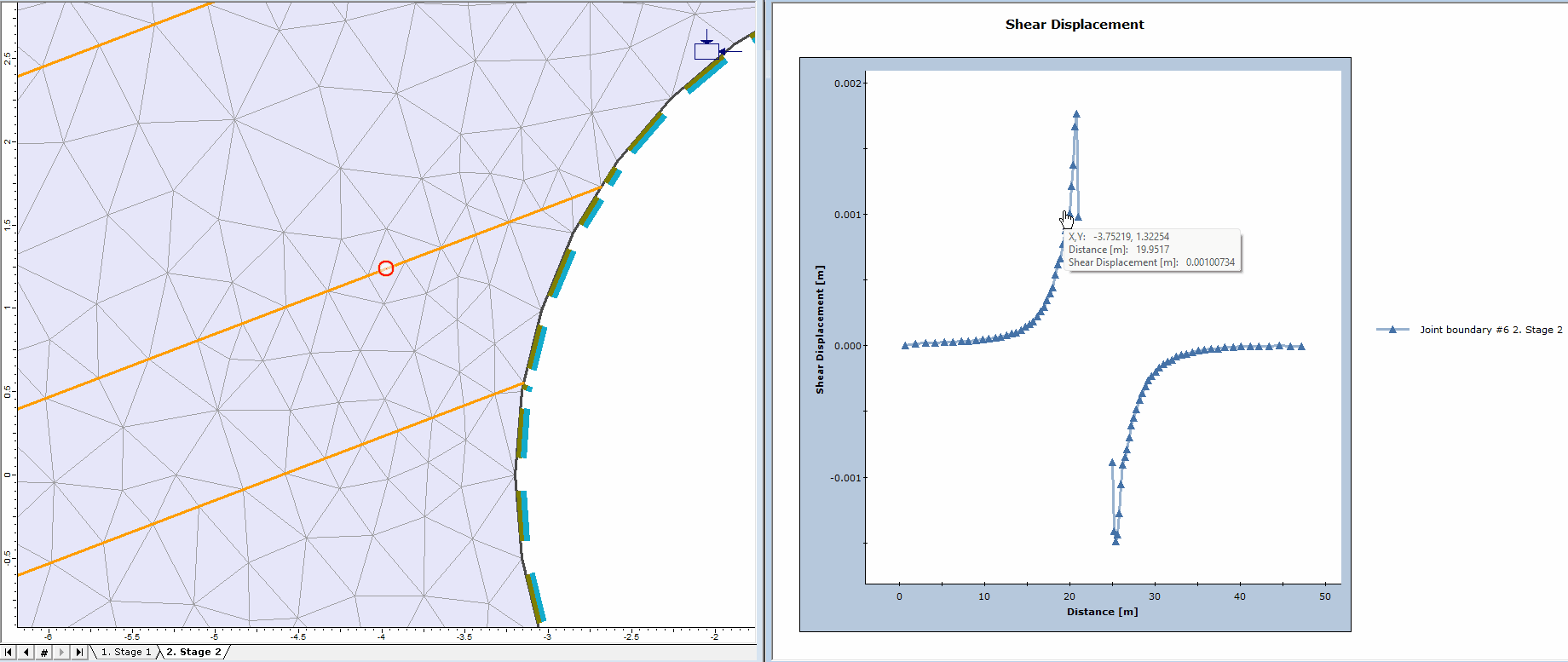Graph Joint Data
To graph joint data:
- Select Graph Joint Data
 from the toolbar or the Graph menu. You will first be prompted to pick the joint(s) to graph.
from the toolbar or the Graph menu. You will first be prompted to pick the joint(s) to graph. - You can select joints with the left mouse button, or multiple joints with a window, or all joints by using Select All in the right-click menu. Note that if a joint consists of multiple line segments, it is treated as a single joint for the purposes of selecting and graphing.
- When you are finished selecting, press Enter, or right-click and select Graph Selected from the popup menu.
- You will then see the Graph Joint Data dialog, which allows you to select the data type to plot, as well as plotting data from multiple stages on the same plot. You can also choose whether to colour-code the lines according to the joint type (if you are plotting different joint types on the same graph), or according to the stage (if you are plotting data from multiple stages).
- When you have made the desired selections in this dialog, select Plot and the graph will be generated in RS2. Alternatively, data may be plotted in Excel or copied to the clipboard, by selecting the Plot in Excel or Copy Data buttons. See the Plot in Excel and Copy Data topics for more information.
- If you have both the viewport and the graph windows open side-by-side, click on a data point in the graph, the corresponded node will be highlighted with a red circle in your viewport (see GIF below).

Joint result data point highlight.
- If you have both the viewport and the graph windows open side-by-side, click on a data point in the graph, the corresponded node will be highlighted with a red circle in your viewport (see GIF below).
Joint Data Types
In the Graph Joint Data dialog, the joint data type can be selected from:
- Normal Stress
- Shear Stress
- Normal Displacement
- Shear Displacement
Joint Data Graphs
- The DISTANCE axis corresponds to the distance along each joint. If a joint consists of multiple line segments, it is treated as a single joint for the purposes of graphing.
- Note the ID numbers at the end of each curve. These correspond to the joint ID numbers, which are automatically displayed whenever joint data is graphed. The ID numbers also indicate which end of a joint (on the model) corresponds to the end of each curve (on the graph). This is important, and you should always check where the joint ID numbers are on each joint, to make sure you are interpreting the graph correctly. To turn OFF the display of the ID numbers after graphing, you can uncheck the Joint Numbers option in the Display Options dialog. Alternatively, a convenient shortcut is to right-click on any joint, and uncheck the Joint Numbers option in the popup menu.
Tips
- A shortcut for graphing data for a single joint, is to right-click ON a joint, and select Graph Joint Data from the popup menu. The procedure is then the same as steps 4 and 5 above.
- You may find the Show Values option useful in conjunction with Graph Joint Data, to display joint data directly on the model.